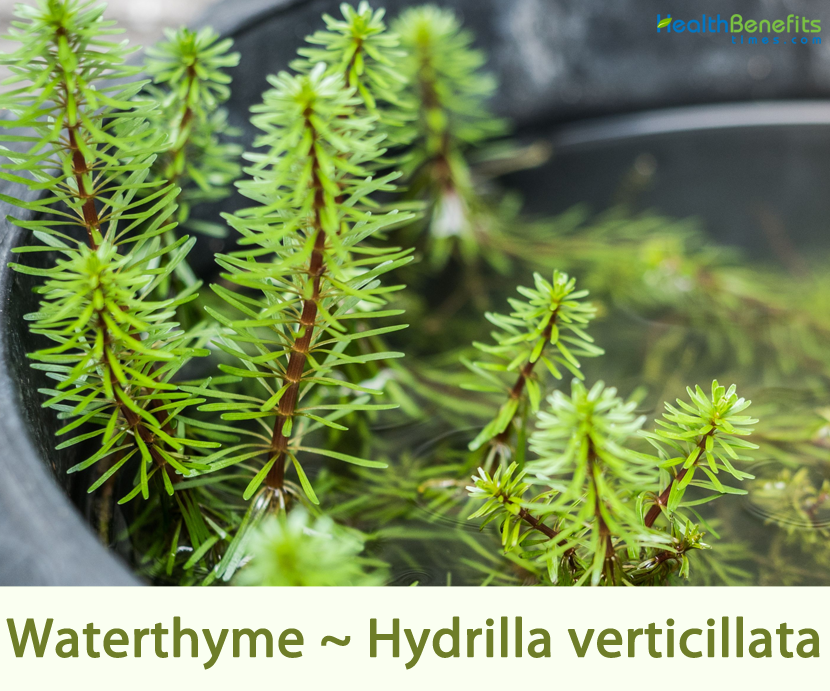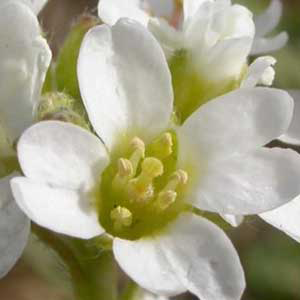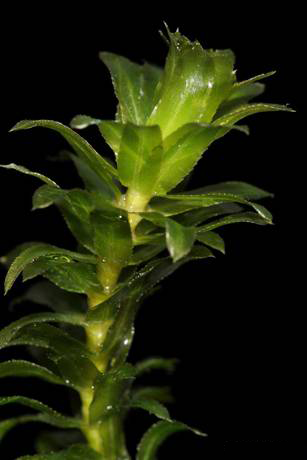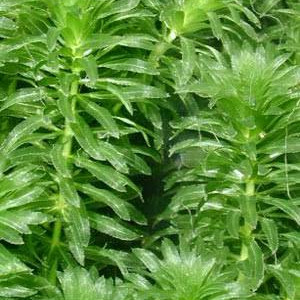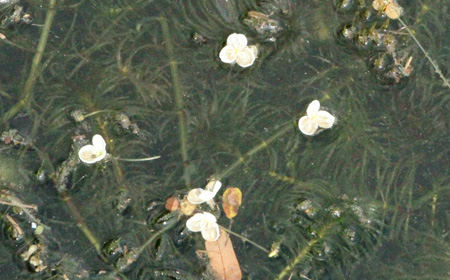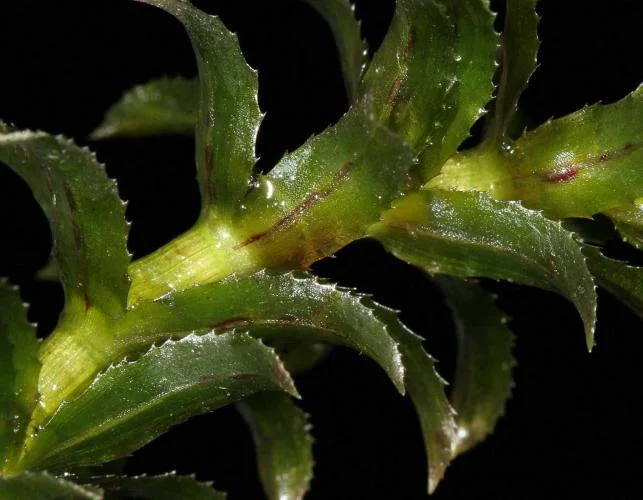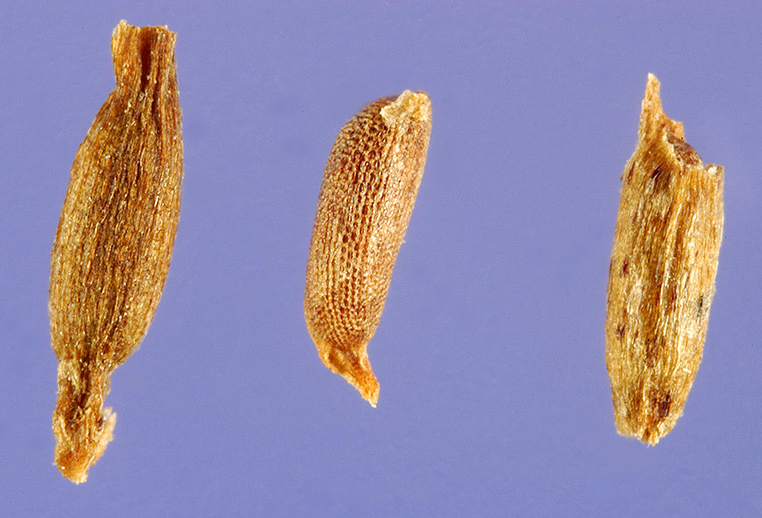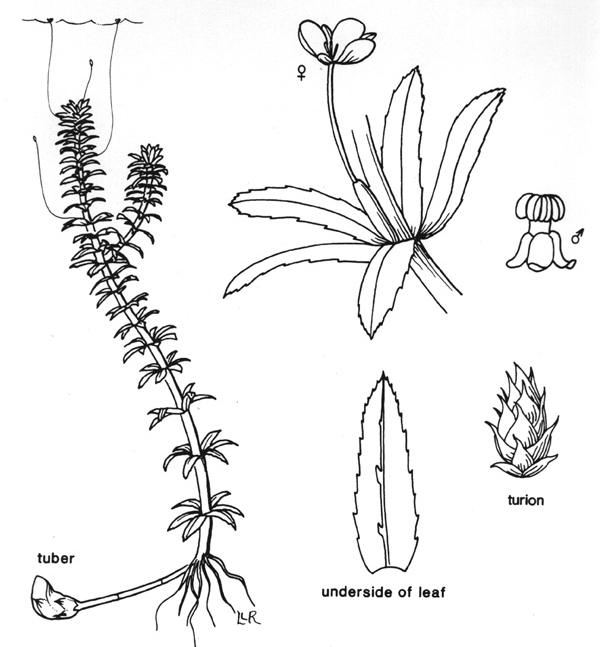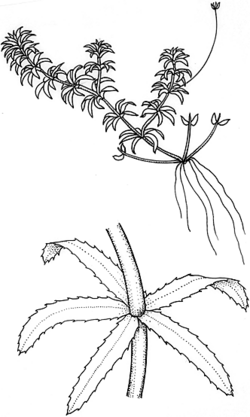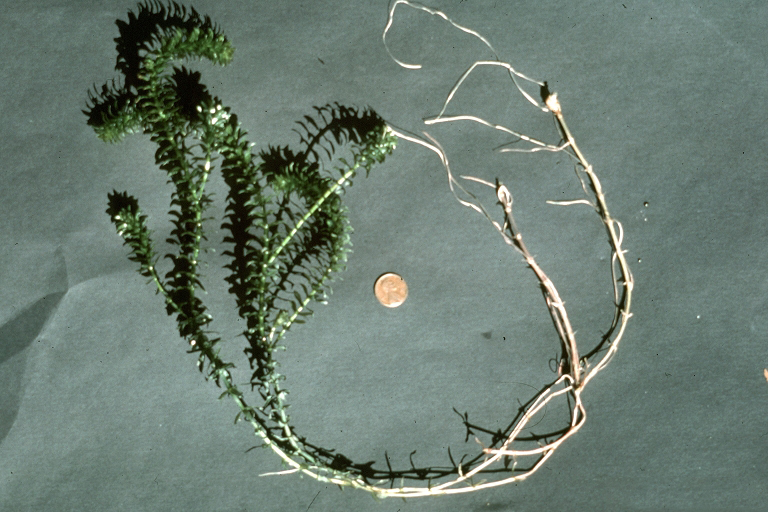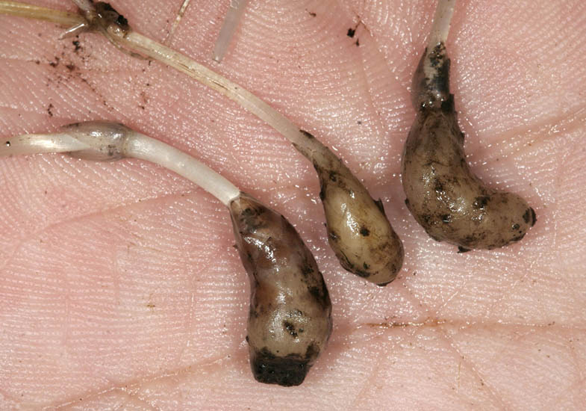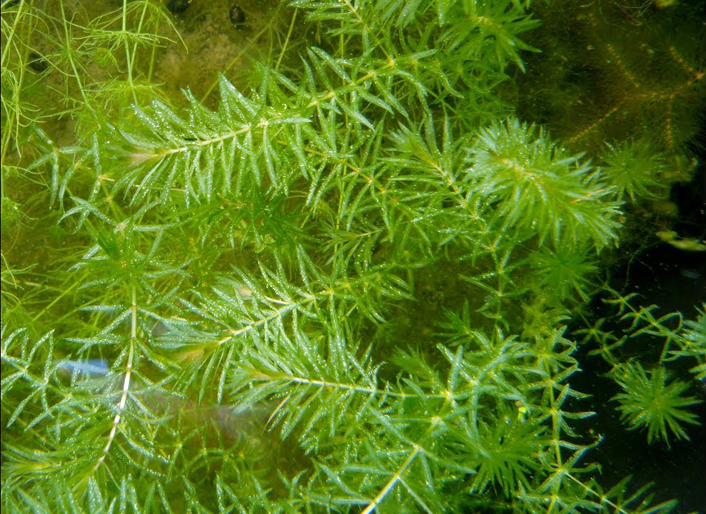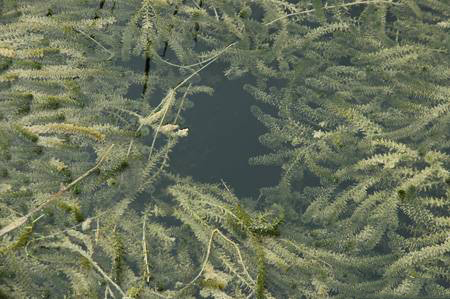| Waterthyme (Hydrilla) Quick Facts | |
|---|---|
| Name: | Waterthyme (Hydrilla) |
| Scientific Name: | Hydrilla verticillata |
| Origin | Old World in Asia, Africa and Australia |
| Colors | Dark brown (Seed) |
| Shapes | Narrowly cylindrical, smooth fruit about 5 to 10 mm long and 1.5 mm wide, |
| Taste | Acrid |
| Health benefits | Support for abscesses, burns, wounds, regeneration of bones, skin, hair and nails, constipation, neurological health, blood sugar control, strengthen immunity and increase endurance. |
| Name | Waterthyme (Hydrilla) |
|---|---|
| Scientific Name | Hydrilla verticillata |
| Native | Native to the cool and warm waters of the Old World in Asia, Africa and Australia, with a sparse, scattered distribution; in Australia from Northern Territory, Queensland, and New South Wales |
| Common Names | Esthwaite waterweed, water thyme, hydrilla, Florida Elodea, Indian Stargrass, Water Weed |
| Name in Other Languages | Afrikaans: Hydrilla Albanian: Hydrilla Amharic: Hayidirīla (ሃይድሪላ) Arabic: Hidra (هيدرا) Armenian: Hidrila (հիդրիլա) Assamese: Pani-birina, Sial-bhobra-khar, Patal-khar Azerbaijani: Hidrilla Bengali: Hydrilla, Jhangi, kureli, saola Bulgarian: Hydrilla Burmese: Hydrilla Chinese: Shuǐ hydr (水hydr), hei zao (黑藻) Croatian: Hydrilla Cuba: Hidrila Czech: Hydrilla Danish: Hydrilla Dutch: Hydrilla English: Hydrilla, esthwaite waterweed, water thyme, water thyme, Florida elodea, Indian Stargrass Esperanto: Hidrilo Estonian: Hüdrilla Filipino: Hydrilla Finnish: Hydrilla French: Hydrilla , Hydrilla de Lithuanie Georgian: Hidrila (ჰიდრილა) German: Hydrilla, Guinduetzel, Quirllboettrige, Wasserquirl, Grundnessel, quirlblättrige Grundnessel Greek: Ydrílla (υδρίλλα) Gujarati: Hā iḍrilā (હાઇડ્રિલા) Hausa: Hydrilla Hebrew: הידרה Hindi: Hydrilla, Jhangi, kureli, sevar Hungarian: Hínár Icelandic: Hydrilla Indonesian: Hydrilla, Ganggang, Ganggeng Irish: Hydrilla Italian: Hydrilla, peste d’acqua Japanese: Haidorira (ハイドリラ), kimono, kuromo, Kurumo (クルモ), ebimo (エビモ) Javanese: Hydrilla Kannada: Haiḍrillā (ಹೈಡ್ರಿಲ್ಲಾ) Kazakh: Gidrilla (гидрилла) Korean: Hideula (히드라), geomjeongmal (검정말) Kurdish: Hîdrilla Lao: Hydrilla Latin: Hydrilla Latvian: Hidrilla, mieturu hidrilla Lithuanian: Hidrila, menturlapė ežerutė Macedonian: Hidrila (хидрила) Malagasy: Hydrilla Malay: Hydrilla Malayalam: Haiḍrilla (ഹൈഡ്രില്ല), ene-pael Maltese: Idrilla Manipuri: Charang Marathi: Hāyaḍrilā (हायड्रिला), Seval, Shakharisheval Mongolian: Gidrilla (гидрилла) Nepali: Haidrila (हाइड्रिला), Khasi (खसी) Norwegian: Hydrilla Oriya: ହାଇଡ୍ରିଲା | Pashto: هایډریلا Persian: هیدریلا Polish: Hydrilla Portuguese: Hydrilla Punjabi: Hā īḍrilā (ਹਾਈਡ੍ਰਿੱਲਾ) Romanian: Hydrilla Russian: Gidrilly (гидриллы), gidrilla mutovchataya (гидрилла мутовчатая) Serbian: Hidrilla (хидрилла) Sindhi: هائيڊليلا Sinhala: Hayiḍrillā (හයිඩ්රිල්ලා) Slovenian: Hidrila Spanish: Hidrilla, maleza acuática, elodea de Florida, hydrilla Sundanese: Hydrilla Swedish: Hydrilla, Vattenkrans Tagalog: Ináta, lomolomótan Tajik: Gidrilla (гидрилла) Tamil: Haiṭrillā (ஹைட்ரில்லா), amiranappaci, cikavalakam, cimpaka Telugu: Hydrilla (hīˈdrilə ), poonaachu, valakada Thai: Hydrilla (hīˈdrilə) Turkish: Hydrilla Ukrainian: Hidryla (гідрила) Urdu: ہائیڈریلا USA: hydrilla, water weed Uzbek: Gidrilla Vietnamese: Hydrilla Welsh: Hydrilla, Alaw Gwelw, Ffugalaw Gwelw Zulu: I-hydrilla |
| Plant Growth Habit | Slender, submerged fast-growing, monoecious or dioecious perennial aquatic herb |
| Growing Climates | Found in freshwater, springs, lakes, marshes, ditches, rivers, tidal zones, ponds, impoundment canals, streams, bayous and reservoirs. Similarly it can be grown in a variety of aquatic habitats, from acidic to basic, oligotrophic to eutrophic, fresh to brackish, and from a few centimeters deep to a meter or more if light penetrates that deeply |
| Soil | It thrives on many kinds of pollution and tolerates a great deal of disturbance |
| Plant Size | Up to 200 cm long |
| Root | Roots are long, slender and unbranched. They develop ovoid tubers at the tips |
| Tuber | Tubers are tough, off white to brown-black, and 4-19 mm long |
| Stem | Stems are branched, about 1 mm thick and up to 3 m long; the internodes are 3 to 50 mm long |
| Leaf | The leaves are arranged in whorls of two to eight around the stem, each leaf 5–20 mm long and 0.7–2 mm broad, with serrations or small spines along the leaf margins; the leaf midrib is often reddish when fresh |
| Flowering season | May to October |
| Flower | It is monoecious (sometimes dioecious), with male and female flowers produced separately on a single plant; the flowers are small, with three sepals and three petals, the petals 3–5 mm long, transparent with red streaks |
| Fruit Shape & Size | Narrowly cylindrical, smooth fruit about 5 to 10 mm long and 1.5 mm wide |
| Seed | Seeds are smooth, dark brown, usually 2 to 3 mm long and borne in a single linear sequence |
| Taste | Acrid |
| Plant Parts Used | Stems, leaves, flowers, turions and tubers |
| Propagation | By seeds and vegetatively by plant fragments, tubers and stolons |
| Season | June to October |
| Health Benefits |
|
| Other Facts |
|
Plant Description
Waterthyme (Hydrilla) is a slender, submerged fast-growing, monoecious or dioecious perennial aquatic herb that normally grows up to 200 cm long. The plant is found growing in freshwater, springs, lakes, marshes, ditches, rivers, tidal zones, ponds, impoundment canals, streams, bayous and reservoirs. Similarly it can be grown in a variety of aquatic habitats, from acidic to basic, oligotrophic to eutrophic, fresh to brackish, and from a few centimeters deep to a meter or more if light penetrates that deeply. It thrives on many kinds of pollution and tolerates a great deal of disturbance. The roots are long, slender and unbranched. They develop ovoid tubers at the tips. Tubers are tough, off white to brown-black, and 4-19 mm long.
Stem
The stem is slender, cylindrical branched, 25 to 200 cm long, erect, floating in water or stoloniferous in the ground. The floating stems have pedunculated axillary turions, of green color, cylindrical of 3 to 12 mm length and 2 to 3 mm of diameter. The stoloniferous stems form brown tuberous turions at the end.
Leaves
The sessile leaves are formed in whorls at the nodes; there are 3-8, sometimes up to 12 leaves in a whorl. The leaves are 6 – 20 mm long, 2 – 4 mm wide, linear to lanceolate, with a conspicuous midrib. They have sharply toothed margins distinctly serrated and serrations visible with the naked eye and spines on the vein on the lower side of the leaves; a few teeth may also be formed on this vein. These leaf characteristics are commonly used to distinguish H. verticillata from similar submerged plants in the Hydrocharitaceae, like Egeria and Elodea spp. Leaf color can vary from green, translucent, yellowish, to brown. The leaf midrib is often reddish when fresh.
Inflorescence
Monoecious plant with solitary, axillary, unisexual flowers included in a sessile or almost sessile spathe.
Flower
The male spathe forms a collar around the stem, in globular cup of 1.5 mm, surmounted by a crown of small points. In the center of the cup, a small button becoming dehiscent, releases the male flower in button, which goes up on the surface of water to open out. It is of red color, with 3 broadly oval, convex sepals, from 1.5 to 3 mm length and 1 mm broad, reflecting along the short pedicel and acting as floats. It has 3 spatulate petals from 2 to 3 mm long, white or reddish. It also has 3 sub sessile stamens with erect anthers.
The female spathe is cylindrical, 4 to 5 mm long, with a bidentate apex, of red color striped of brown. The flower has 3 oblong to obovate sepals from 1.5 to 3 mm long, white and 3 white petals of the same size but closer. The ovary is inferior forming a tube from 1.5 to 10 cm long from the spathe to the perianth. It is formed of 3 lodges.
Fruits
Fertile flowers are followed by narrowly cylindrical, smooth fruit about 5 to 10 mm long and 1.5 mm wide, usually with long, spine-like processes. It contains 2-7 oblong-elliptic seeds. Seeds are smooth, dark brown, usually 2 to 3 mm long and borne in a single linear sequence. Two types of hibernacula are produced — a brown, bulb like type is produced at the ends of the stolons, while a green, conical form is found in axils of branches. In the United States, the first type is usually called tubers and the latter turions.
History
Waterthyme (Hydrilla) has a wide and rather disjointed geographical range. This range includes South-East Asia, Australia, Central Africa, a few sites in Europe and, since at least the early 1960s, the USA and the Panama Canal area. In Asia, it is found from Iran and Afghanistan through Pakistan and India to South-East Asia, reaching northwards to Japan, Korea and Manchuria, China. It was first recorded on north Iraqi rivers by Al-Mandeel. It is thought to be native to Africa and south and Southeast Asia. The common dioecious type of H. verticillata is thought to originate from the Indian subcontinent, whereas the origin of the monoecious type is likely to be Korea. It also occurs in the Moluccas, Indonesia and Papua New Guinea. In the Indian Ocean it occurs on Mauritius, Réunion and Madagascar. In the Pacific Ocean it has been found on Fiji and Guam. It is a common plant in the northern and western parts of Australasia and it also occurs in the North Island of New Zealand.
On the African continent it occurs around Lake Victoria and Lake Tanganyika in the Rift Valley of East Africa, while it has also been reported from Mozambique and a few isolated places in West Africa and, in 2006, from South Africa. It is thought to be native but is relatively rare in Europe, sufficiently so that it is protected in Lithuania. It occurs in certain areas in Poland and Belarus, and has been found in solitary lakes in Ireland.
Health benefits of Waterthyme (Hydrilla)
Hydrilla gives you powerful, complete whole-food nutrition that promotes and supports abundant energy levels, positive mood, a healthy immune system, weight loss and more. Listed below are some of the popular health benefits of hydrilla
1. Enhance Mental Performance
Hydrilla’s wide range of essential vitamins, minerals and antioxidants gives your body the nutritional foundation it 3. needs for optimal mental performance and function. Hydrilla is loaded with vitamin B12, which is a powerful, essential, mood-regulating Vitamin. Hydrilla is also rich in the entire mood supporting B-Vitamins.
2. Antioxidant Powerhouse
Hydrilla is loaded with essential minerals and antioxidants that stimulate and support your Immune system such as Zinc, Selenium, Superoxide Dimutase (SOD), Vitamin C, and more.
3. Loaded With Calcium
Hydrilla is the world’s most concentrated source of the essential mineral Calcium, which is responsible for maintaining the youthful appearance of your skin, bone strength (prevents osteoporosis), air, tooth and nail strength and health, and is necessary for hundreds of other essential body processes and functions.
4. Experience the Clarity
Hydrilla has a gentle cleansing effect on the digestive tract, removing waste buildup and toxins as well as helping promote regular bowel movements.
5. Supports and encourages Weight Loss
Hydrilla offers totally natural weight loss support. It can help reduce appetite by supplying our bodies with the nutrition they need for total health. Food cravings are our body’s way of telling us that it needs more nutrients, which we typically obtain from food. When you supply your body with the high levels of vitamins, minerals and antioxidants found in Hydrilla, food cravings are usually reduced because our cells are nourished and supplied with the essential nutrition they need.
Traditional uses and benefits of Waterthyme (Hydrilla)
- Hydrilla is known to have many digestive and health benefits.
- The plant consists of vitamins, minerals, and antioxidants, as well as being useful for fighting indigestion.
- The plant is also known for its extremely high concentration of calcium, vitamin B-12, iron and magnesium.
- The plant has become an extremely popular “super food”
- Dried powder from the plant has been used as detergent in the treatment of abscesses, burns and wounds.
- It plays an important role in healthy functioning of Brain and Nervous System.
- It promotes good mood, energy and improved memory since the body gets active vitamins and minerals.
- Hydrilla is rich in magnesium, silica and other minerals. These minerals aids in growth and regeneration of bones, skin, hair and nails.
- The high iron content in hydrilla nourishes and builds blood.
- It supports vision, healthy skin and proper gene transcription.
- The polysaccharides in Hydrilla have health enhancing properties and maintain healthy Immune System.
- It stimulates peristalsis and treats constipation.
- It removes food waste and toxins from the body.
- It is considered good for athletes as well as those with weak body.
- It helps to rebuild, restore and increase endurance.
- It can be used as a daily tonic in juices and smoothies to absorb its health promoting benefits.
- It is used in the treatment of abscesses, boils and wounds, particularly if there is debris in the wound.
- Dried powder of the plant is applied to cuts and wounds to help accelerate healing.
- This plant may be used to provide complete nutrition, to improve digestion and gastrointestinal function, circulation, neurological health, blood sugar control, to strengthen immunity and increase endurance.
- Hydrilla plant may be used for digestion and gastrointestinal function, improves blood circulation, and helps in detoxification, good for neurological health and cardiovascular function.
- It increases endurance; help in blood sugar control strengthens immunity to protect the body from invaders and slows ageing.
Prevention and Control
Due to the variable regulations around (de)registration of pesticides, your national list of registered pesticides or relevant authority should be consulted to determine which products are legally allowed for use in your country when considering chemical control. Pesticides should always be used in a lawful manner, consistent with the product’s label.
Hydrilla can be controlled by physical, chemical and biological methods, or by a combination of these methods (integrated pest management).
Physical Control
The removal of plants either manually, using hand tools, or mechanically, using machines, is relatively expensive. Several machines, developed for aquatic weed control, can be used to remove Waterthyme (Hydrilla) plants from irrigation canals and drains; these include mowing buckets attached to a tractor or hydraulic excavator.
Different harvesters can be used to remove Waterthyme (Hydrilla) from lakes; these harvesters collect the plant material and dump it on the shore. One problem in the use of these harvesters is that cuttings of hydrilla, which are not removed from the water, help to spread the weed. Using mechanical control of hydrilla on large lakes without the use of herbicides or other control methods has not been feasible because of high cost, short-term effects and logistical constraints.
In the USA, lake drawdowns are occasionally used to expose the plant and dry it out.
Chemical Control
The application of herbicides in or near water bodies may have serious consequences for the environment and can endanger the health of local people if the water is used for drinking, swimming or washing. As a consequence, there are strict regulations for the use of chemicals to control aquatic weeds in many countries. The risk is greatest when the herbicide is introduced directly into the water, which is necessary for the control of submerged weeds.
There are many chemicals which are effective against Waterthyme (Hydrilla) but only a few of these compounds are reasonably safe for the environment and human health. One additional problem is that the use of herbicides can lead to the buildup of masses of decaying plant material and, as a consequence, a sudden decrease in the oxygen content of the water.
Until recently, the main herbicide options for Waterthyme (Hydrilla) were endothal, diquat and copper. The costs of applying these contact herbicides twice a year in Florida amounted to approximately $400 per ha.
A systemic herbicide, fluridone, has been developed which can provide effective control of hydrilla; this control usually lasts for about one year. The costs in the 1990s amounted to approximately $200 per ha per year. Hydrilla biotypes with varying levels of fluridone resistance, however, have been documented in Florida. Benoit and Les reported an alarming increase in fluridone resistance in Florida, and the first case of resistance outside this state, from Lake Seminole in Georgia. Schmid et al. (2010) stated that the herbicide resistance in Florida had resulted in the inability to economically control large infestations of this weed. Even eight years after the last applications of fluridone in the Kissimmee Chain of Lakes in Florida, most hydrilla remained resistant. This herbicide resistance has led to renewed interest in biological control methods.
The herbicide, bensulfuron-methyl, has been tested against H. verticillata. After one month, effective concentrations caused severe damage but regrowth occurred rapidly where herbicide exposure was limited to periods of less than 14 days. Langeland reported that while this herbicide showed promise, an Experimental Use Permit was not renewed in 1992 and efforts to register the compound were discontinued.
Since 2007, four new herbicides have been registered for hydrilla control in Florida. They include the active ingredients bispyribac-sodium, flumioxazin, penoxsulam, and imazamox.
Biological Control
Biological control is theoretically the best method of controlling aquatic weed problems because the effect is lasting and relatively inexpensive. The most promising biological control agent for Hydrilla is the phytophagous fish, grass carp or white amur. It feeds on many aquatic plants, in particular, submerged species. It is presumed that the grass carp will not breed outside its native habitat in China and Siberia as it requires special conditions for spawning. However, artificial reproduction is possible in fishery stations. In the USA, 180-320 kg/ha of grass carp is required for effective control of Hydrilla, whereas 80-70 kg/ha is sufficient in India.
A sterile, triploid grass carp has been bred because there is some controversy in the USA over the possibility of grass carp reproducing naturally in sufficient quantities to interfere with fisheries and waterfowl populations. This hybrid grass carp is the result of a cross between a female grass carp and a male bighead carp. Control of Hydrilla using grass carp and hybrid grass carp is highly economical. In the USA, this control amounts to approximately $12 per ha per year. However, the fish needs to be retained within a certain area using fencing to prevent movement from the target site. This also allows the fish to be removed if the population needs to be managed. Fouts et al. found stakeholder support for methods of hydrilla control, including the use of sterile grass carp in public reservoirs in the southern USA where a neurotoxid cyanobacterial species growing on hydrilla was linked to a fatal wildlife disease.
Four insects of the genera Bagous and Hydrellia have been introduced into the USA by entomologists. These insects have eliminated large infestations of Hydrilla. Bagous affinis from India was released in Florida, USA, in 1987. This species was recently shown to have potential as a biological control agent of Hydrilla in California as it survived the winter season. Research on these insects and other potential candidates for biological control continued, and early introductions were reviewed by Center.
The development of herbicide resistance in fluridone populations in Florida led to renewed interest in biological control methods. The study by Schmid et al. found that the leaf-mining fly Hydrellia pakistanae survived at similar levels on fluridone resistant and susceptible genotypes of hydrilla, whereas a stem-mining midge Cricotopus lebetis had lower emergence when reared on herbicide resistant genotypes. Center et al. report that Bagous hydrillae released in the southern USA had persisted and dispersed widely in the southeastern USA, but found no evidence that it has had a suppressive effect on hydrilla.
Bownes reports on the possible use of Hydrellia spp. for biological control of H. verticillata in South Africa. H. pakistanae was rejected as a bio control agent in favor of a Hydrellia species collected in Singapore. Bownes and Deeming (2016) suggest that Hydrellia purcelli from Singapore is a candidate bio control agent for this weed in South Africa.
Integrated Pest Management
An integrated approach to the control of Hydrilla had been followed in Fish Lake in Florida, USA, and an area with 22 lakes in the headwaters of the Kissimmee River. This approach involved applying the herbicide, fluridone, and subsequently releasing hybrid grass carp. By 2000, however, sustained use of fluridone resulted in dominance of hydrilla strains resistant to this herbicide throughout these lakes. Last large-scale applications of fluridone were conducted in 2004, but in 2012 most of the hydrilla remained resistant.
References:
https://en.wikipedia.org/wiki/Hydrilla
https://www.cabidigitallibrary.org/doi/10.1079/cabicompendium.28170
http://www.theplantlist.org/tpl1.1/record/kew-308117
https://www.flowersofindia.net/catalog/slides/Water%20Thyme.html
https://indiabiodiversity.org/species/show/259142
https://gd.eppo.int/taxon/HYLLI
https://pfaf.org/user/Plant.aspx?LatinName=Hydrilla+verticillata
http://www.hear.org/pier/species/hydrilla_verticillata.htm
https://www.itis.gov/servlet/SingleRpt/SingleRpt?search_topic=TSN&search_value=38974#null
https://plants.usda.gov/home/plantProfile?symbol=HYVE3


